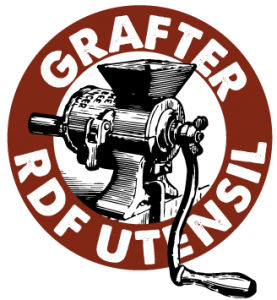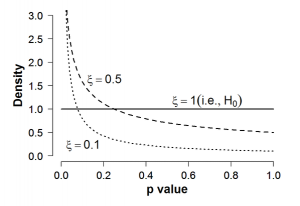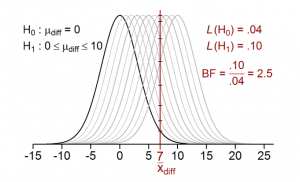Social and news media, violent extremism, ISIS and online speech: Research review
The Journalist’s Resource is produced by Harvard’s Shorenstein Center on Media, Politics and Public Policy and is a must read site if you are a journalist or if you are interested in high quality background on current news stories. Having said that, you need to read the background materials themselves, in addition to the summary given by these reports.
It is often claimed but always absent evidence, that the social media campaigns of ISIS and other terrorist groups are “successful” and “attracting supporter,” so much so that governments pressure social media companies to censor their content.
From the review:
A March 2015 report from the Brookings Institution estimates that there at least 46,000 Twitter accounts run by supporters of the Islamic State (also known as ISIS or ISIL), a group of violent extremists that currently occupies parts of Syria and Iraq. This group has also taken to posting violent videos and recruiting materials on digital platforms, posing a dilemma for Silicon Valley companies — YouTube, Google, Twitter, Facebook and the like — as well as traditional news publishers. Facebook, for example, has grappled with whether or not to allow videos of beheadings to be viewed on its platform, and on March 16, 2015, again modified its “community standards.”
Although rising connectivity has helped make these problems more acute in the past few years, terrorism analysts have long been theorizing about an international media war and a globalized insurgency. The RAND Corporation has documented the unique radicalization process now taking place in the digital era. The dilemmas are personal for many organizations: ISIS has not only executed journalists but has even threatened employees of Twitter who seek to block accounts threatening violence.
For news media, there are hard questions about when exactly propaganda is itself newsworthy and when reporting on it serves a larger public purpose that justifies allowing access to a mass audience and amplifying a violent message, however well contextualized. This has led to questions about whether the slick production and deft use of media by ISIS is indeed just a form of “gaming” journalists. Reporting on terrorism in a globalized media environment has been the subject of much debate and research since the Sept. 11, 2001, attacks; the press has faced steady criticism for focusing too much on relatively rare violent acts while neglecting other aspects of the Muslim world, and for hyping threats and helping to sow fear.
I applaud the resources that the review assembles, including the RAND report which is cited for the proposition:
The RAND Corporation has documented the unique radicalization process now taking place in the digital era.
There’s only one problem with using that report as a source. See if you can spot it from the abstract:
This paper presents the results from exploratory primary research into the role of the internet in the radicalisation of 15 terrorists and extremists in the UK. In recent years, policymakers, practitioners and the academic community have begun to examine how the internet influences the process of radicalisation: how a person comes to support terrorism and forms of extremism associated with terrorism. This study advances the evidence base in the field by drawing on primary data from a variety of sources: evidence presented at trial, computer registries of convicted terrorists, interviews with convicted terrorists and extremists, as well as police senior investigative officers responsible for terrorist investigations. The 15 cases were identified by the research team together with the UK Association of Chief Police Officers (ACPO) and UK Counter Terrorism Units (CTU). The research team gathered primary data relating to five extremist cases (the individuals were part of the Channel programme, a UK government intervention aimed at individuals identified by the police as vulnerable to violent extremism), and ten terrorist cases (convicted in the UK), all of which were anonymised. Our research supports the suggestion that the internet may enhance opportunities to become radicalised and provide a greater opportunity than offline interactions to confirm existing beliefs. However, our evidence does not necessarily support the suggestion that the internet accelerates radicalisation or replaces the need for individuals to meet in person during their radicalisation process. Finally, we didn’t find any supporting evidence for the concept of self-radicalisation through the internet. (emphasis added)
Opps! “…didn’t find any supporting evidence for the concept of self-radicalisation through the internet.”
Unlike some experts and reporters, the RAND researchers themselves call the fifteen subjects a “convenience sample” and caution against drawing conclusions based on so small a sample. But that is fifteen (15) more than were spoken to in the Brookings Institute study which is now all the rage on ISIS and Twitter.
The authors go on to point out:
The consensus is that self-radicalisation is extremely rare, if possible at all (Bermingham et al., 2009; Change Institute, 2008; Precht, 2008; Saddiq, 2010; Stevens and Neumann, 2009; Yasin, 2011 (Rand report, page 20))
Of course, the authors did base their study on primary evidence and not what might play well on the evening news. That is the most likely explanation of the difference between their conclusions and those of governments and social media companies who are goading each other towards more censorship.
I don’t doubt for a minute that media, social and otherwise plays some role in the political positions people adopt. The footage of air strikes taking the lives of women and children are as painful for some as the videos of family members being beheaded are for others.
The callous indifference of Western governments to human suffering, in pursuit of their goals and policies, is a more effective recruitment tool for terrorists than any ISIS could invent. Not to mention it has the advantage of being true.
Or to put it another way, the answer to the suffering of Palestinians, Syrians, Iraqis, etc., isn’t “Yes, but….” Conditioning a solution to human suffering on political ends is enough of an answer for everyone to choose sides.




